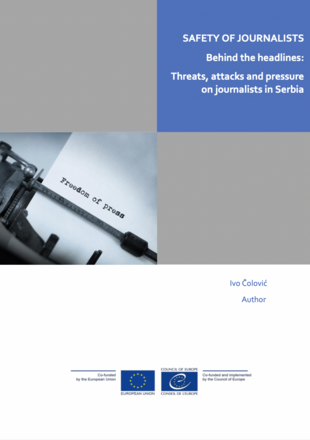
The report analyses journalists' perceptions of the media environment, focusing on self-censorship, threats and violence against journalists, as well as online harassment. The sample included 130 journalists, half women and half men, with an average work experience of 22 years. Overall the report highlights a deteriorating context for the safety of journalists.
Over half of the journalists reported that they self-censored themselves before, citing fear for personal safety, ethical dilemmas, and pressure from employers as the most common reasons. More than 68% of those who reported on self-censorship episodes believe it negatively impacted their journalistic work, and around 53% regret their decision. Additionally, journalists recognized three elements that could lead to a decrease in self-censorship:
- Greater public awareness and advocacy for media freedom
- Regulated legal status of journalists
- Improved legal protection of journalists
Threats were more prominent against journalists reporting on illegal activities and corruption. The reaction of state authorities was overwhelmingly described as inadequate (90%), with 75% of respondents indicating that the attitude of state officials toward them was negative. Journalists described impact on mental health, such as heightened anxiety, as the most common consequence. Smear campaigns, aimed at ruining reputation, as well as SLAPP lawsuits were experienced by 29,9% and 36,8% of journalists respectively.
Around 39% said they had been victims of online harassment. They highlighted cyberbullying, trolling, and false impersonation as the most common forms. Digital attacks are becoming increasingly common and influence privacy and reputation, further hindering freedom of expression.
Based on the research data, certain recommendations were developed:
- Improvement of legal protection, particularly by enhancing existing laws on the protection of journalists.
- Public awareness campaigns that highlight the current state of the journalistic profession.
- Informing journalists about their rights and mechanisms of protection.
- Good practices in responding to reports of threats and intimidation, which would make journalists more confident in the system.
The content of this article can be used according to the terms of Creative Commons: Attribution-NonCommercial 4.0 International (CC BY-NC 4.0) . To do so use the the wording "this article was originally published on the Resource Centre on Media Freedom in Europe" including a direct active link to the original article page.

